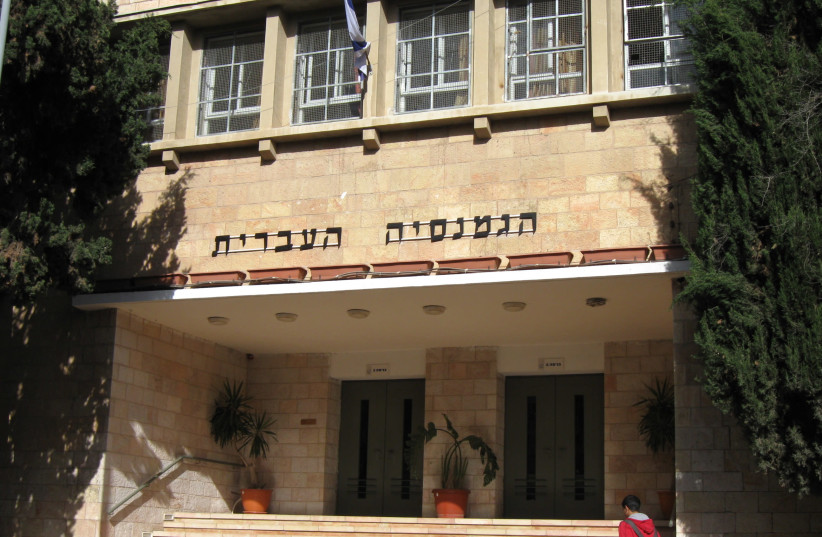Nestled in the heart of Jerusalem, the Rehavia neighborhood stands as a testament to the city’s rich history and diverse cultural tapestry. This charming district, known for its tree-lined streets and historic architecture, has become a haven for intellectuals, artists, and those seeking a glimpse into Jerusalem’s soul.
Situated between Keren Kayemeth LeIsrael Street and Aza Street, and bordering the neighborhoods of Talbiyeh, Sha’arei Hessed, and Kiryat Shmuel, one of Rehavia’s defining characteristics is its vibrant and eclectic cultural scene. Walking through its streets, one can feel the harmonious blend of tradition and modernity. The neighborhood serves as a meeting point for people of various backgrounds, fostering a unique atmosphere that reflects the city’s diverse population.
Our Mother’s Square
At the heart of Rehavia lies Rachel Imeinu Square, named after the biblical matriarch Rachel. The square exudes a tranquil charm, surrounded by cafés, including the exquisite Rachel Basadeh sandwich establishment and boutique shops where locals and visitors alike gather to enjoy a cup of coffee or explore the unique finds. This central hub is not only a physical focal point but also a symbolic one, embodying the unity and resilience of the people who call Rehavia home.
For a more vibrant feel, step away from the square and leafy boulevards and head down Aza Street to David Seton Square, where the cafés, bars, and vibrant night scene show off the neighborhood’s growing population of youngsters and students.
Iconic landmarks
One cannot discuss Rehavia without mentioning the iconic Windmill, a historic landmark that has become synonymous with the neighborhood. Built in the 19th century by the Templars, a German Christian community, the Windmill stands tall as a silent witness to the passage of time. Its blades no longer turn, but the structure remains an integral part of Rehavia’s skyline, a living testament to the neighborhood’s enduring spirit.

Rehavia also contains other notable city landmarks. Gymnasia Rehavia was Jerusalem’s first modern high school when it opened (in 1910), moving to its current location in 1929. Its alumni include many government ministers and two former presidents of the State of Israel.
Just within Rehavia’s borders is the official Prime Minister’s Residence on Balfour Street, which has seen almost weekly protests in the past few years as the country has dealt with the COVID-19 pandemic, the government’s plans for judicial reform, and, most recently, the ongoing war between Israel and Hamas.
Architectural and cultural riches
As you stroll along the boulevards, you’ll encounter a treasure trove of Bauhaus and International Style architecture. The meticulous design and attention to detail in these buildings tell the story of the neighborhood’s evolution, from the early 20th century to the present day. Each facade whispers tales of the past, inviting the passerby to step into a bygone era.
Cultural institutions abound in Rehavia add depth to the neighborhood’s character. The Jerusalem Theater, with its striking modernist design, hosts a myriad of performances, from classical concerts to contemporary plays. The Bible Lands Museum provides a captivating journey through the ancient world, showcasing artifacts from various cultures that have shaped the region.
Rehavia’s synagogues, such as the Great Synagogue and the Yeshurun Central Synagogue, stand as architectural jewels, offering not only places of worship but also windows into the spiritual heritage of Jerusalem. The sacred spaces in Rehavia reflect the neighborhood’s commitment to preserving its religious and cultural roots.
Quiet and intimacy
In the midst of this cultural richness, the neighborhood manages to maintain an intimate and welcoming atmosphere. Locals often gather in the parks and green spaces, creating a sense of community that transcends cultural and religious boundaries. As the sun sets over Sacher Park, residents and visitors can appreciate the quiet beauty of Rehavia, where the past and present coexist in harmony.
Rehavia is a neighborhood that encapsulates the essence of Jerusalem – a city where history, culture, and community converge. From its iconic landmarks to its diverse cultural offerings, Rehavia invites all who meander along its streets to become part of a living story, a story that unfolds with each step through its winding paths and hidden corners. ■
- Est. Population: 2,000
- Avg. Real Estate:
- House – NIS 2.8 million (buy)
- Apartment – NIS 7,000/mo.
What's new in In Jerusalem?
- This week in Jerusalem: For your health
- A guide to Jerusalem real estate, construction boom, and traffic
- How Mayor Moshe Lion is transforming Jerusalem and preserving stability
- October 7 massacre survivor displays artwork in new exhibit
- Jerusalem's Rehavia neighborhood: A tapestry of culture, timeless landmarks
- Lori Palatnik: Giving newlywed IDF soldiers hope and a home to return to
- Eser: A restaurant where the vibes are as good as the food - review
- Grapevine: Celebrating Walter
- Jerusalem highlights January 12-18
